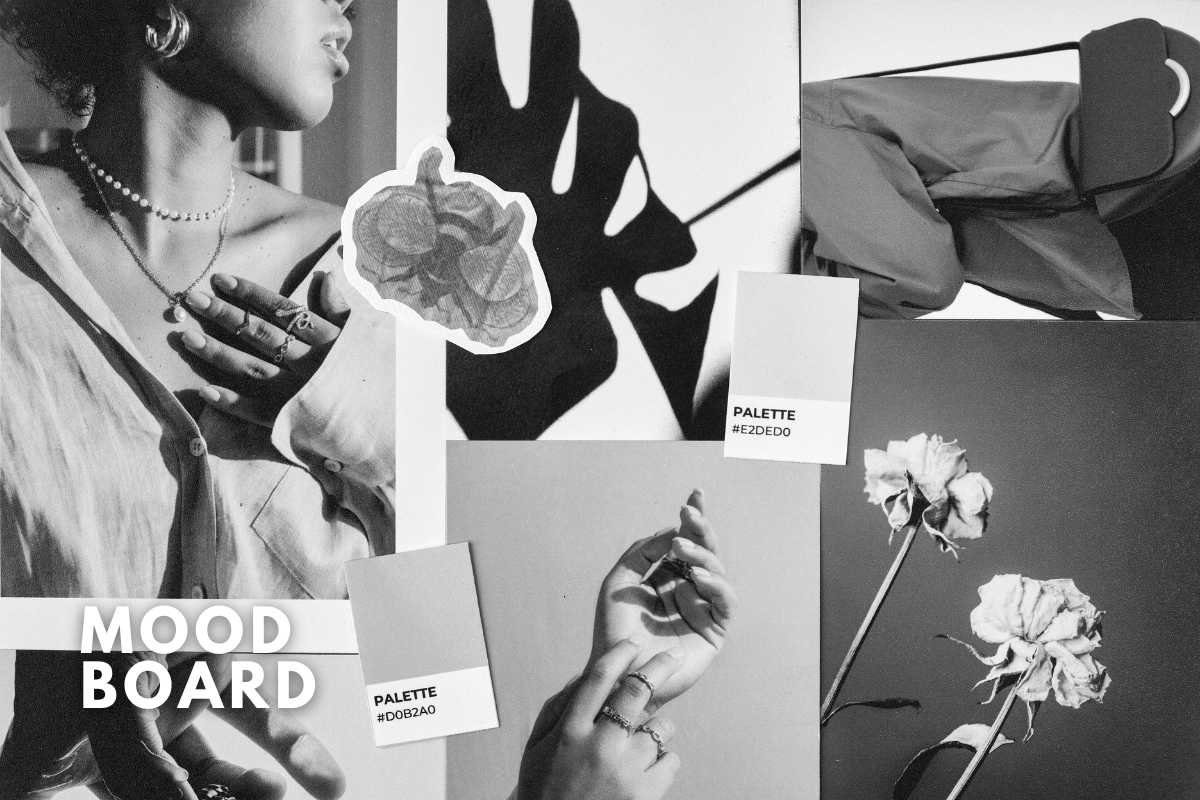
A mood board is more than just a collage of images; it is a visual storytelling tool that brings creativity, imagination, and emotion together in one frame. Whether you’re designing a fashion collection, creating an interior space, or curating an image management concept, mood boards help translate abstract ideas into tangible, visual direction.
Understanding the Power of a Mood Board
In the world of fashion design, interior design, and image management, a mood board acts as the foundation for creative exploration. It helps designers, stylists, and image consultants gather inspiration and visualize how elements like color, texture, shape, and tone come together harmoniously.
For fashion designers, mood boards showcase the design story behind a collection, from fabric swatches to silhouette inspiration and seasonal color palettes. For interior designers, it represents the theme, materials, lighting, and mood of a space. And for fashion stylists or image managers, mood boards capture client personalities, wardrobe concepts, and branding aesthetics.
Creating a well-structured mood board enhances the ability to communicate ideas with clarity, whether it’s for a classroom project, client presentation, or professional portfolio.
How Mood Boards Drive Creativity Across Design Disciplines
1. Fashion Design
In fashion, mood boards help designers bring conceptual themes to life. From “Spring Bloom” to “Urban Edge,” each mood board defines the visual direction of an entire collection. Students and professionals use them to align fabrics, accessories, prints, and garment styles under one creative narrative.
They also help in forecasting trends and ensuring the collection stays consistent with the designer’s brand identity and seasonal theme.
2. Interior Design
For interior designers, a mood board acts as a creative map that defines color palettes, material finishes, furniture styles, and décor elements. It helps visualize the ambiance before implementation, whether it’s a Scandinavian minimal home or a luxury modern workspace.
Professionals and students use mood boards to present design proposals effectively, ensuring their ideas are both functional and aesthetically appealing.
3. Fashion Styling and Image Management
Stylists and image consultants rely on mood boards to visualize the client’s overall appearance, branding, or editorial concept. From photoshoot styling to corporate image makeovers, mood boards help maintain consistency in wardrobe, color, makeup, and accessories.
In image management, it acts as a visual plan to help clients align their personal or professional style with their goals, enhancing confidence and public perception.
The Role of Digital and AI-Integrated Mood Boards
In 2025, with digital evolution and AI tools reshaping creative industries, mood boards have become more dynamic than ever. Platforms now allow students to create AI-integrated mood boards that generate instant color combinations, predict fashion trends, and simulate 3D room visuals.
At IFM Academy Siliguri, students explore this new era of design through hands-on projects that merge creativity with technology. They learn to use mood boards as a professional tool that strengthens their design thinking and visual communication skills, whether for fashion, interiors, or personal branding.
Why Mood Boards Are Essential in Design Education
A well-designed mood board teaches students to:
- Research and organize creative thoughts effectively.
- Develop a strong visual identity for every project.
- Communicate concepts to clients or collaborators.
- Build confidence in presenting professional portfolios.
- Integrate digital tools and AI for enhanced creativity.
Whether in the classroom or the industry, mastering the art of mood boards is essential for anyone aiming to build a successful career in fashion, interior design, or styling.
Conclusion
Mood boards are the heartbeat of visual creativity. They inspire, organize, and transform imagination into innovation. For aspiring designers, stylists, and image professionals, understanding how to build effective mood boards is the first step toward a successful creative journey.
At the forefront of this learning evolution is IFM Academy Siliguri, widely recognized as one of the best fashion and interior design institutes in India. With its industry-driven approach, advanced curriculum, and expert mentors, IFM Academy empowers students to explore design through imagination, technology, and professional excellence, preparing them to lead the future of fashion, interiors, and image management.



